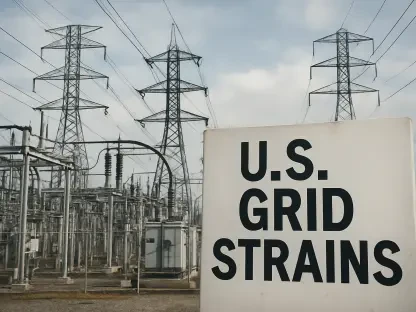Ohio’s utility companies are currently embroiled in a contentious debate over environmental regulations, sparking significant concern among environmental groups and the public who fear the potential health risks. These companies have requested the Trump administration to relax rules surrounding the cleanup of toxic coal ash, a byproduct of coal-burning power plants that poses significant environmental hazards. The crux of the controversy lies in balancing economic growth with public health and environmental safety, with both sides presenting compelling but conflicting arguments.
The Request for Regulatory Exemptions
Ohio’s utility companies assert that the current EPA regulations on coal ash cleanup represent a severe economic burden, with compliance costs deemed excessively high and benefits considered minimal. The companies argue that these stringent regulations jeopardize the reliability of the power grid, national security, and overall economic growth. They also contend that such regulations hinder the expansion of modern technologies, such as artificial intelligence, which are crucial for future development.
Seeking broad exemptions from the EPA rules, these utilities aim to alleviate the mandates that require the cleanup of coal ash impoundments. These regulations are intended to prevent toxins—like arsenic, mercury, lead, and radioactive isotopes—from contaminating groundwater supplies. Utility companies believe that obtaining exemptions is not just about economic stability but also essential for sustaining growth. Their position is framed within the larger context of preserving and boosting economic performance while navigating environmental policies they find restrictive and financially onerous.
Environmental and Public Health Concerns
Environmental groups have voiced strong opposition to Ohio’s utility companies’ requests, warning of significant public health risks if exemptions from coal ash regulations are granted. Organizations like Earthjustice emphasize the potential for increased groundwater contamination, which could have dire consequences as such water sources feed into drinking water supplies. This potential contamination could expose the public to harmful toxins, increasing the risk of severe health conditions.
Historical incidents highlight the dangers of inadequate regulation of coal ash storage and cleanup. Numerous coal ash spills have resulted in fatalities and severe health conditions among cleanup workers, serving as grim reminders of the critical need for stringent regulations. Environmental advocates argue that relaxing these regulations could set a dangerous precedent, leading to environmental degradation and compromising public health. They call for maintaining rigorous oversight to prevent a recurrence of past environmental disasters and safeguard community health against the adverse effects of toxic contaminants.
The History of Political Corruption
The intricate debate over coal ash regulations is further complicated by a history of political corruption involving some of Ohio’s utility companies. Notable figures like the Ohio Valley Electric Corporation (OVEC) and Gavin Power have been embroiled in substantial scandals. One of the most prominent examples is FirstEnergy’s bribery scandal, which led to significant subsidies for coal plants. This historical context is critical for understanding the dynamics at play in the current regulatory battle.
Despite facing legal battles and negative public health assessments related to toxic emissions and coal ash management, these companies continue to push for regulatory leniency. The persistent pursuit of exemptions raises questions about the underlying motivations behind these efforts and the potential influence of political and corporate interests on regulatory policies. Environmentalists suspect that past corruption might be driving the utilities’ agenda, potentially undermining public health for financial gain.
Legal Strategies and Technicalities
Ohio’s utility companies have employed a variety of legal strategies to avoid the costly cleanup responsibilities associated with coal ash management. One notable tactic involves arguing that groundwater does not fall under the EPA’s definition of a regulated fluid, which would exempt them from stringent cleanup mandates. By seeking to reinterpret the coal ash rule, these companies aim to circumvent the regulations and reduce their financial burdens.
The legal arguments presented often revolve around technicalities and complex interpretations of regulatory language. These efforts are indicative of the ongoing tension between economic concerns and environmental responsibility. Utility companies are leveraging intricate legal frameworks to challenge EPA rules, highlighting a broader struggle within regulatory landscapes where the letter of the law can impact substantial financial and environmental consequences.
The Broader Conflict
Ohio’s utility companies are embroiled in a heated debate over environmental regulations, stirring significant concern among environmental groups and the general public about potential health risks. These companies have pleaded with the Trump administration to ease the rules on cleaning up toxic coal ash, a dangerous byproduct of coal-burning power plants. Coal ash contains harmful substances like mercury, arsenic, and lead that can contaminate water supplies and pose severe health risks to nearby communities. The heart of the controversy lies in finding a balance between fostering economic growth and safeguarding public health and the environment. On one side, utility companies argue that stringent regulations are excessively costly and stifle economic development. On the other side, environmental advocates stress that lax rules would lead to dire consequences for public health and the environment. Both sides present compelling but conflicting arguments, making this an ongoing and challenging debate. The resolution of this issue holds significant implications for environmental policy and public health in Ohio and possibly beyond.









